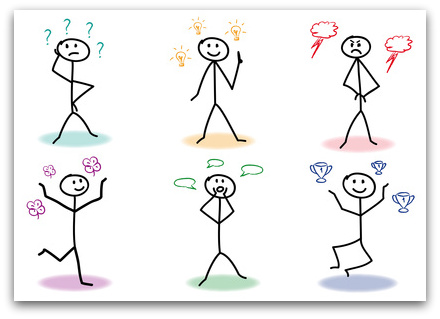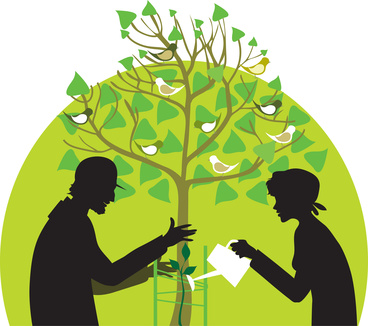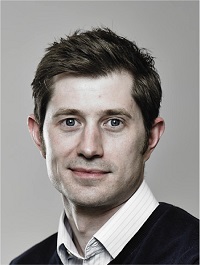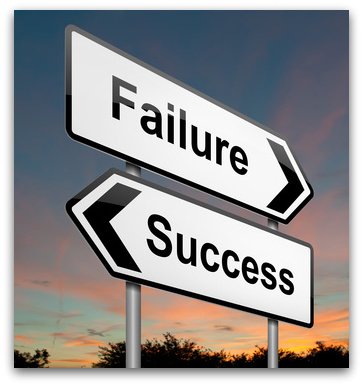Making A Difference
One of the motivators that attract many coaches to coaching is the desire of making a difference – in today’s guest post Jennie J Gorman discusses:
Making A Difference
By Jennie J Gorman

‘Did I do enough today to make a difference to someone?’ This is what I ask myself at the end of every day.
It is such an important question. Not only to ask oneself, but knowing and hearing the answer is just as important, as we dig deep within for the answer and reflection of how our day progressed.
‘What counts in life is not the mere fact we have lived. It is what difference we have made to the lives of others that will determine the significance of the life we lead’. Nelson Mandela
Making a difference for me is what my life is all about. I spend many hours a day on social media, knowing from the messages and feedback I get, that the posts that go out do make a difference, not only those people I know but also to many I have never met.
We all have the opportunity every day to change someone’s life by just being aware of the world around us. If you love what you do, you will be in the minority unfortunately. These are the people who want and intend to change the world in their own way. They are not the complainers or the people who just tolerate what they have to do to survive. These are the change-agents.
Do you see yourself as someone who is making a difference? Are you a change-agent?
We all have the opportunity to make a true and measurable impact in our own unique way. We have our gifts that give us the opportunity to use, as an influencer, in not only our own life but with others as well. It may be to change the life of one person or hundreds or thousands. It does not matter, as long as we are creating a change in whatever way we are able.
Often people who have struggled with some misfortune are given the chance to give back, and become privileged where they would never have imagined they would be. Often they come from disadvantages backgrounds, have a physical disability or have had their own life transformed as a result of an experience. The secret for them is that they recognised it and changed their own life, and then, the lives of others around them to a more positive attitude and outcome.
To make a difference, we need to recognise that we are blessed with something special to pass onto others. Everyone has something special if they the time and care to look and be aware. This comes to us all in different ways and it is getting out of our own limited thinking into a positive attitude that will distinguish us from others.
If you are a mover and shaker, who wants to change the world in your own unique way, it is because you recognise how blessed you are and dedicate yourself to giving your life a meaning and purpose. To do this, you need to be prepared to take risks, knowing in yourself that you have a message to pass onto others. Once you recognise your purpose you will become driven and focused to make the difference in whatever way you can perceive. You know that all you need to do is to move forward with commitment to do whatever your purpose.
Another thing, I notice with people who want to make a difference, is that they are on the road of self-improvement understanding that they are not perfect and only have to do the best they can for the outcome they are pursuing. They also know that every day is a new learning that will guide them forward in their endeavour to reach their goals. They are innovators who are open to learning and experiencing and not concerned about showing their loving compassionate heart. Their aim is to be the best they can be whilst they create the way forward for others.
Having been a relationship builder and teacher for many years, I understand the importance of how a positive attitude is in being an influencer, as we open to all those around us. Building good relationships is about being a giver (not a taker) in all things. We all have exceptional gifts that we can share with others, that will mutually benefit the world around us. By sharing our gifts, knowledge, strategies and talents we can freely give of ourselves to others our opinions and support authentically, without expectation of some return. We know that all authentic relationships are equal, supportive and positive, and that these create the foundation to what we wish to create and achieve.
Wanting to be a change-agent in this world, in whatever capacity we do it, takes time and effort. It is not something that happens overnight. It takes personal energy, and lots of trust in ourselves, to impact others, by striving to be and do the best we can in whatever area we are beckoned to make the difference. Self-belief is what pushes us forward to affect the change we are wishing to make in others, be it through thinking, behaviours, boundaries or beliefs. We know in ourselves that this will create something bigger and better in the long-run in their lives too.
Sharing what we know is important to all change-agents. We are happy to share our time, knowledge, work and ideas without any fear of loss. We know that what gifts we have been given to share are for anyone who wants them. They are not ours to keep for ourselves, they are given to us to share and teach in a true and positive way for the enhancement and growth of others. I believe, as all change-agents do, that the more we give, the more we receive in return. In fact, we receive ten-fold in unexpected and mysterious ways, which would not have been there had we not shared in the first place.
We are here to uplift others to be the best they can be. It is not about us. It is about the people we are given the opportunity to influence so they can become the best they can be. We are just the door opener for others, by inspiring and uplifting them to reach their full potential to make a difference to others as well. As we help and support others, we in turn are helped and supported to make the difference we set out to make in the beginning. We sow what we reap and this in turn gives others the opportunity to do the same.
So make a difference, be the leader by operating from your own heart-centre, by moving others forward with grace and ease, compassion and care. We are blessed to have the opportunity to make a difference.
I suggest that you ask yourself two questions.
![]() The first one, are you personally impacting the world around you?
The first one, are you personally impacting the world around you?
![]() The second question, how significant is your life to this juncture?
The second question, how significant is your life to this juncture?
For more information on how you can be supported email je****@**************om.au or http://www.AnOnPurposeLife.com.au
About Jennie J Gorman
My passion and mission has always been to help and support not only business professionals and SME’s to create business relationships to claim their place in the marketplace but to support those wishing to become more self aware too.
I support people through Business MasterMinding, using a process which I have been developing over the last seven plus years, giving participants their own individual ‘board of directors’ to keep them accountable and on track.
I am known to motivate and inspire people to perform at a level that they hadn’t yet recognised by either doing one-on-one sessions, on-going Coaching, Mentoring or MasterMind groups.
My book ‘Awesome Authenticity’ – mastering business relationships is available via my website or Amazon.
Ezinearticles expert page: Jennie J Gorman
Article Source: Making A Difference



 Ben Morton is a Leadership Consultant at
Ben Morton is a Leadership Consultant at 




